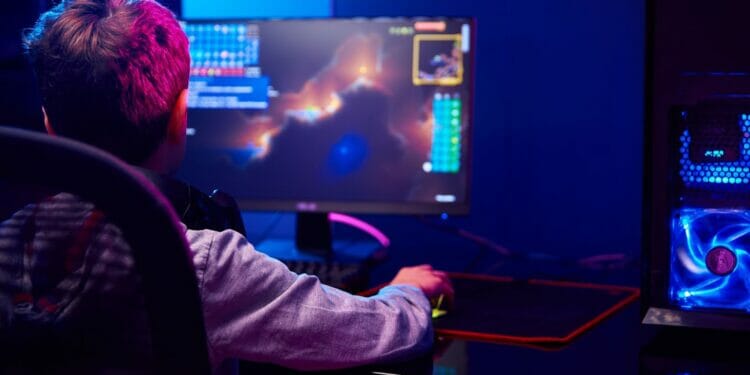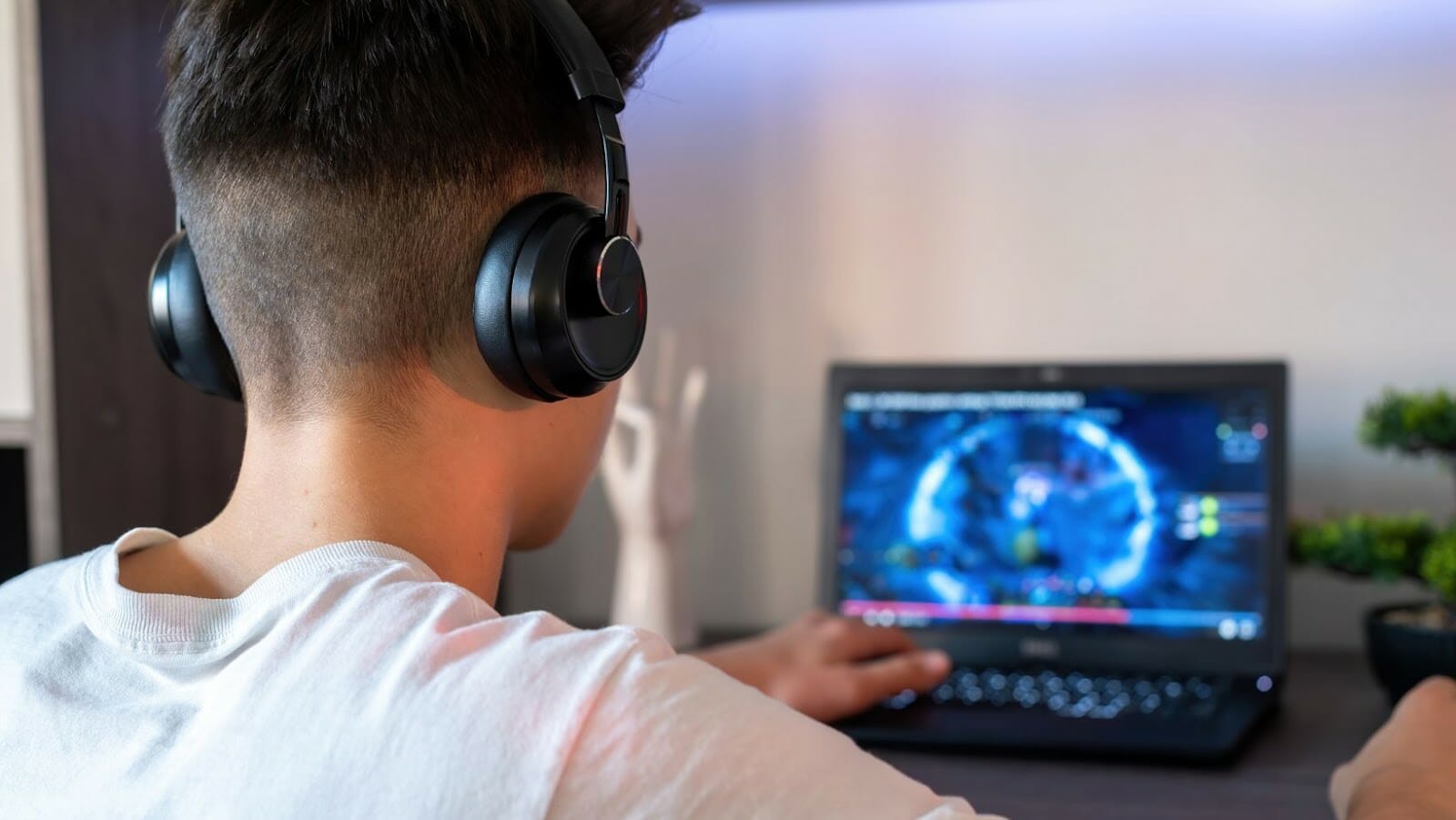Valve, the digital game distribution platform, is moving in the portable gaming market with a plan to develop a Switch-like gaming PC. This portable gaming device will enable gamers to play their favourite games on-the-go. In addition, the device will bring the full-fledged PC gaming experience to a smaller form factor with features like customisable controllers and attachable modules.
This article will discuss why Valve is venturing into the portable gaming market and how the device will benefit gamers.
Valve is Making a Switch-like Portable Gaming PC
Valve Corporation is a privately owned American video game developer and digital distribution company based in Bellevue, Washington. Founded in 1996 by former Microsoft employees Gabe Newell and Mike Harrington, Valve is best known for their award-winning franchise, Half-Life, the Steam platform, Counter-Strike: Global Offensive, and other titles as Portal 2, Dota 2 and Left 4 Dead.
Valve Corp. began as a game developer but has grown to become one of the world’s leading PC gaming platforms and digital marketplaces. The company is constantly pushing the boundaries of virtual reality (VR) with its signature hardware products such as its Vive headsets and new ventures such as its upcoming box-shaped product called the “Steam Machine” which will allow users to play games on their television through dedicated hardware.
Beyond its development of popular online game titles, Valve has also developed several other products to enhance PC gaming experiences such as the Steam Link device which allows gamers to stream games from any compatible device with internet access; and SteamVR which allows gamers to play virtual reality games on compatible headsets. The company’s most recent endeavour seems to be a foray into developing a portable analog of sorts for Switch-style portable gaming experience with an exciting new product called “SteamPal” recently revealed by Valve in 2021.
What is The Switch?
The Nintendo Switch is a hybrid gaming console that can be used as a home console connected to the television and an on-the-go handheld portable device. It was released in March 2017 and quickly became Nintendo’s fastest selling console, with more than 75 million units sold worldwide. The Switch incorporates several design elements from gaming PCs, such as two joysticks and touch inputs, enabling users to play games wherever they are. In addition, it allows users to connect up to eight other Switches or similarly equipped PC devices for local multiplayer sessions.
This is why Valve has recently announced their plan to create a similar device – a portable gaming PC that looks and acts like the Switch but taps into their gaming platform and ecosystem.
Reasons for Valve’s Move
Valve, the popular game developer and publisher, has recently announced that they are creating their portable gaming PC. This is a direct attempt to compete with the very successful Nintendo Switch and other hybrid consoles.
But why has Valve decided to make this move? In this article, we’ll explore the reasons why Valve is entering the portable gaming market:
Increased Portability
Valve has seen the success of Nintendo’s Switch, and has decided to create their portable gaming PC. The Valve Switch-like offers gamers the same convenience of portability while allowing them to play more powerful games than what is available on traditional consoles. Additionally, with the increasing focus on gaming laptops by other industry giants, having a dedicated handheld device appealing to hardcore gamers seems like a logical next step for Valve.
Valve’s product is much more powerful than Nintendo’s Switch and most gaming laptops in its form factor, able to run games at high resolutions with sophisticated graphics effects enabled. This has only been made possible by their use of important technologies including:
- CPU and GPU cores from Independent Software Vendors (ISVs)
- Optimised cooling solutions
- Special thermal optimizations
- Several strategically placed hardware connectors for connecting external devices such as monitors or controllers (such as the Steam controller)
These are just some reasons gamers may be excited about this potent handheld device that promises big performance in a small package.
More Powerful Hardware
With more powerful hardware, the portability of a gaming PC has become more achievable. As a result, many users have asked for a gaming device that can be taken on the go for a long time. With its new Switch-like portable gaming PC, Valve is bringing something entirely new to the market.
The device packs an 8th gen Intel Core i5 processor and can run games from its Steam library. Additionally, it includes support for networking technologies like WiFi and Bluetooth 5.0 and USB-C ports so you can easily connect accessories like a mouse or headset without having to lug around bulky external hardware.
Valve’s switch-like portable gaming PC allows gamers to enjoy top-tier games such as DOTA 2, CS:GO and more in high resolution with smooth gameplay thanks to its powerful hardware components like NVIDIA’s GeForce GTX 1060 GPU, 16GB of RAM, and up to 512GB of NVMe SSD storage space onboard. Compared to typical laptop systems, these specifications are significantly beefier than most laptops offer while still fitting into an incredibly compact form factor. So it’s no wonder why many consumers are excited about its potential!
Easier Access to Steam Library
Valve’s move to make a Switch-like portable gaming PC is aimed at eliminating the need for users to own a separate gaming device or console for playing their favourite titles. Instead, with the new device, gamers can simply access their entire Steam library by carrying it around wherever they go. This would help players avoid investing in another expensive headset or game console just for playing some of their favourite games on the go.
In addition, the device would offer smooth performance with no lag or stuttering as Valve’s hardware specs would power it.
Moreover, Valve has been launching its flagship “Steam Link” app which allows users to stream their games from one device (such as a PC) onto another mobile device such as a tablet or smartphone. Therefore, allowing users to access their Steam library on the go through this device could make it even more convenient and easier than traditional gaming consoles or PCs.
Benefits of a Portable Gaming PC
A Portable Gaming PC is an exciting new device that has been gaining popularity lately. Valve, a popular video game company, is making their version of it. With their new device, gamers can take their gaming setups on the go.
In this article, we will go over the many benefits of owning a Portable Gaming PC:
Increased Mobility
The most obvious benefit of a portable gaming PC is increased mobility. Valve’s upcoming portable gaming PC will allow users to take their gaming system, whether travelling or commuting from one place to another. It will end the traditional desktop PC setup and make gaming more accessible. That’s what makes Valve so keen on pursuing the project – it gives more players access to high-end hardware and games in a single, convenient package.
Portable PCs can also compete with traditional gaming consoles such as the Switch. Unlike older models, these new PCs are small enough to fit into many laptop bags or backpacks, making them much easier to transport than traditional console systems. Furthermore, they are often equipped with high performance mobile graphics cards and CPU allowing them to provide quality gaming experiences even on small screens like the Switch or PSP Vita.
Additionally, they come packed with features that can make your life easier when it comes to keeping connected while travelling or commuting – such as built-in Wi-Fi connectivity and USB ports for connecting peripherals like controllers or external storage drives. Most portable PCs also come preloaded with popular applications for video conferencing, music streaming, entertainment and so much more should you need it.
Improved Graphics
Valve’s portable gaming PC offers improved graphics capabilities over a traditional console. For example, a PC can render more frames per second at higher resolutions than a console, making it more capable of running more graphically demanding games. This makes it ideal for gamers who want to get the most out of their gaming experience. Additionally, Steam Link support allows gamers to stream games from their existing PC setup with virtually no lag, making it similar to using a home console in some ways.
One of the most significant benefits of having a portable gaming PC is convenience and portability. This device can easily be taken anywhere, and there’s no need to worry about cables cluttering your entertainment centre or living room. Furthermore, its small size and lightweight design makes it easy to travel with and an ideal device for those constantly on the go or with limited space in their home or office. Finally, a portable gaming PC ensures you’ll always have access to the latest titles wherever you go.
More Control Options
Portable gaming PCs are always a great option for people who want the power of a full multi-core processor and the freedom of different control options outside traditional mouse and keyboard. Valve is taking this idea to the next level in their effort to create the perfect portable gaming device, with more control options, more performance and a more streamlined design.
The main benefit of having multiple control options on a portable device is that you can still have all your favourite PC functions at your fingertips, even when you’re not near a desktop computer. For example, with a portable gaming PC like Valve’s new model, users will have access to all the same buttons they would find on an Xbox or PlayStation controller and connection points for additional joysticks or trackpads. This makes it ideal for playing games that require precise movements or quick button presses, such as fighting or flight simulator games.
Furthermore, having multiple connections available allows gamers to connect multiple peripherals without sacrificing any standard inputs to do so. This means that users can easily add additional joysticks, gamepads and even steering wheels if they are playing simulation-type games without sacrificing the basic functionality of their device.

Overall, it’s clear that Valve’s goal with their upcoming portable gaming PC is to ensure that gamers can take full advantage of what PC gaming has to offer, no matter where they are!
Challenges for Valve
Valve’s decision to make a portable gaming PC similar to Nintendo’s Switch has raised some questions about the project’s scope. This undertaking will require Valve to overcome numerous challenges, such as developing the hardware, creating a library of games and establishing a sales channel.
Let’s explore the hurdles Valve will have to face to make this switch-like portable gaming PC a reality:
Cost
Valve’s new portable gaming PC has several challenges regarding the cost factor. Firstly, the cost of components will be a significant factor for Valve to profit from its product. From acquiring higher-end chipsets and better SSDs to the design itself – all of these factors must be considered before production begins.
Moreover, since most components would come from external manufacturers instead of being developed and produced internally, they might have higher material costs due to markup and an additional layer of logistical complexity when it comes to assembling its final product. Valve also needs to carefully examine market trends to determine what type of price range is acceptable for consumers to remain competitive in the marketplace.
Battery Life
Valve’s motivation for creating a portable gaming device is to provide gamers with the mobility offered by consoles, while also giving them the power of a gaming PC. Achieving this was always challenging because mobile GPUs have not been as powerful as their desktop counterparts, while laptops have historically suffered from inferior performance and/or poor battery life.
Valve faced technological obstacles in addressing both of these issues effectively.
Battery life is one of the most important challenges that Valve faced when designing its switch-like portable gaming PC. PC gamers typically rely on mains electricity for power and don’t worry about battery life because most desktop PCs do not run on battery. To address this challenge and make their device truly portable, Valve needed to ensure that its device could work off-the-grid, meaning they had to achieve long battery life to be competitive in the market and justify its use over traditional consoles or home PCs.
To achieve decent battery life in its new device, Valve worked with Qualcomm on custom ARM-based processors that offer superior energy efficiency compared to entry level Intel Core “Skylake” mobile processors found in some laptops or tablets. Furthermore, partnerships with game studios such as Unity and Unreal Engine allowed for easy porting of games to function better on these ARM based processors. In addition, multitasking optimizations were made to ensure great performance even when running off battery so games can run more efficiently and better utilise resources such as RAM with less strain put on processor CPUs and GPUs. Finally, components were selected with an emphasis on low power consumption (such as using “Elpida” DDR4 memory), allowing for greater usage times without taking up too much space or weight for portability concerns.
Taking all these measures into account allows Valve’s next generation product concept to become a reality – featuring power & portability alongside all day playability away from home – making it a very attractive proposition over traditional stationary consoles or desktop PCs.
Competition
The competition in the gaming PC space is fierce, with major players such as Sony, Microsoft and Nintendo all vying for a piece of the market. But Valve’s entry into this space brings a unique perspective – gamers are no longer confined to sitting in front of their desktop computers. Although other companies have released their portable gaming PCs, Valve’s offering provides an enhanced level of flexibility that allows gamers to take their PC with them wherever they go.
This added convenience may shift some customer preferences away from traditional hardware like the Playstation 4 or Xbox One and towards Valve’s innovative product. However, with more gamers on the go, Valve will compete against devices such as laptops and smartphones for consumer dollars. This could potentially cause difficulty for Valve should PC specs fail to keep pace with hardware advancements in competing products.

Aside from hardware limitations, Valve may face other challenges when marketing its new device. For example, with multiple available platforms already on offer, it could be hard to convince players to make the switch – especially when they already have access to gaming libraries created specifically for existing services. Therefore, it is possible that perceived value or brand loyalty could play a part in influencing customer decisions, making it difficult for Valve’s device to gain traction within the industry as a viable choice.
Conclusion
It appears that Valve is expecting great things from the Switch-like portable gaming device that it is developing. With the ability to seamlessly switch between desktop and mobile environments and powerful hardware, this device could revolutionise portable gaming. At the same time, it could help usher in a new era of connected living where computing is no longer tied to one area or device.
With its focus on open source software and create-your-own accessories, the SteamPal will undoubtedly have something for everyone – whether you are an enthusiast or casual gamer. Ultimately, we can only wait for details about this exciting new product from Valve and see if their target market responds favourably to its innovative design.
tags = valve video game company, valve corporation, american video game company, software developer, software distribution platform steam, counter-strike franchise, left 4 dead franchise, day of defeat franchise, steampal, valve portable gaming pc, gaming computer, gaming computer steampal, videogame and hardware studio valve, valve pcmachkovech arstechnica, latest version of steam, pc gaming storefront and ecosystem, pc swith-like chassis, ultramobile pc processor, switch-like pc, steampal prototype version, steampal prototype hardware





















